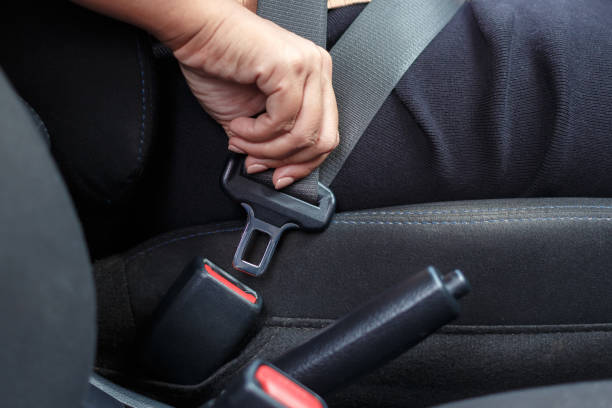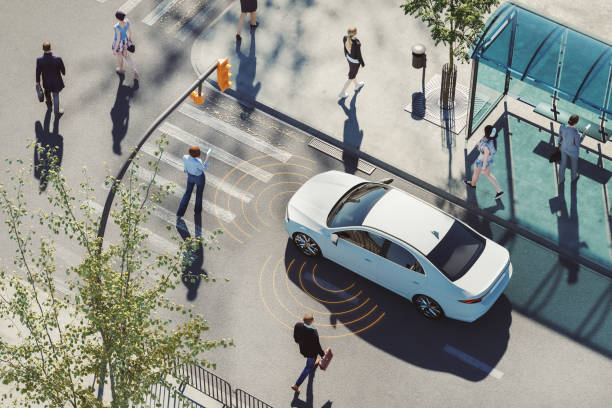The Role of Technology in Post-Accident Emergency Response

New technologies are changing the game in response to emergencies after car accidents. From the rapid alarm to emergency services, over exact rescue efforts modern technology is essential in saving lives and reduce injuries. In this article, we will concentrate on the different technologies for improving post-accident emergency response and its ramifications, along with future scenarios.
Real-Time Accident Detection and Notification
Automatic Crash-Detection: One of the most significant improvements in post-accident emergency response has been automatic crash-detection. Modern cars have these systems integrated into the vehicle and are solely responsible for recognizing a crash with the aid of sensors as well as other algorithms making applicable. In the event of a crash being detected, it can automatically contact emergency services and give information about where your vehicle is located as well as how many people are in side. This quick notification can cut down emergency responder response times, and could be the difference between life or death in future incidents of this nature.
The system is another illustration telematics systems such as OnStar forms of the same technology. It is embedded within the car and sends real-time telemetry back to a central monitoring center from where it can be shared with EMTs. In cars, the quick dispatch of aid will be guaranteed by integrating these systems.
Enhancements in Emergency Communication
Goals Effective communication is critical in an emergency response scenario. More efficient and coordinated disaster response — thanks to advances in communications technology. The modern location-based emergency response system, such as enhanced 911 (E-911) automatically offer dispatchers the latitude and longitude information of a caller. The ability to locate a 911 caller is of special value in cases where such individual may be injured or disoriented and hence unable relay their location.
Real-time mobile devices and platforms have made available to first responders in addition to E911. Apps like PulsePoint allow ordinary citizens to lend a hand in emergencies – they’ll notify you of an incident happening nearby and even tell you how to help until professional responders show up. The apps can also tie into communication systems used by first responders to ensure everyone has access to current information.
The Importance of Drones in Disaster Recovery
Drones – short for unmanned aerial vehicles (UAVs) are increasingly playing a vital role in post-accident emergency response. With cameras and sensors, drones can assess the accident scenes to provide real-time aerial views that help responders get a better idea of what is happening on the ground in order for them to plan their moves accordingly. Additionally, drones can be used to deliver medical supplies in remote locations, making them even more worthy of inclusion among emergency response technologies.
Drones are one option for use in congested or remote locations, where traditional emergency vehicles might have trouble reaching. This can be very important in providing information and context about the scene, like how many vehicles were involved or what kind of damage was done or where hazards lie to rescuers. This data can help emergency teams prepare and respond more quickly.
Advanced Medical Technology at the Scene
The technology is used not only for the purpose of detection and communication, but also in on-scene medical care. Defibrillators, ventilators and diagnostic tools have become more sophisticated and smaller in size making it easier for first responders to deliver on-the-spot life-saving treatments.
One of the major innovations is telemedicine. Paramedics can now receive guidance on how to administer treatments and stabilize patients before arriving at the hospital, from associated doctors using mobile technology. This rapid expert consultation could be vital in life-saving efforts during the critical period directly after an accident.
Integration of Artificial Intelligence and Data Analytics
AI and data analytics are revolutionizing emergency response to deliver preemptive insights empowering decision making. AI can mine data from traffic patterns, weather conditions and historical accident information to predict a high probability of where accidents could take place. This data helps first responders place resources more effectively, decreasing the response time.
After an accident, AI can be employed efficiently to decide which resources should target and in order of severity we tackle the injuries. By studying patient data, machine learning models can find patients who need immediate assistance and make sure the most severe cases are treated first. Apart from making emergency response more efficient, these new technologies also increase patient outcomes.
Smart Traffic Management Systems
At accident scenes, smart traffic management systems go a long way to helping emergency services get there as quickly. Sensors, cameras and communication networks allow these systems to collect data on traffic conditions in real time. If an accident happens, for instance, the system can alter traffic signals so that emergency vehicles have a clear way forward to cut down on delays and promote fast response times.
Adaptive traffic control systems can evaluate and prioritize routings of emergency vehicles by adjusting phasing on-the-fly in real-time based, for example. This lot reduces the time required for ambulances, fire trucks and police vehicles to get on scene of some accident increase chances of success help needed.
The Future of Technology in Emergency Response
Ultimately, we will probably seeing a lot more advanced technology incorporated well into the future of post-accident emergency response. Advancements like the 5G networks providing quicker and more reliable communication will enhance capabilities of current systems. As advanced AI algorithms are deployed, response times and outcomes will be enhanced with deeper insights providing predictive capabilities.
Furthermore, a city-wide system of autonomous emergency vehicles and robots – with no delays for traffic or signals – would be the epitome such revolution as far as registers go. The aim was to get these automated systems straight out onto the scene of accidents and performing things like situational evaluations, initial medical response and possibly even transport victims in proper facilities. Digital stakeholder representation through virtual and augmented reality could support the training of first responders as well help them make real-time decisions on-the-job with guidance, and information overlays.
As a Final Consideration
Post-accident emergency response is focusing on how technology can address immediate crash detection and communication improvements to advanced medical care as well as predictive analytics. All of these technological and innovation advances are not merely edging their way to our lives, they have been in the use for years now saving lives, reducing injuries severity as well as improving overall emergency services efficiency. If things can be as friendly as in 2017 with the way tech advancement is moving, then we anticipate seeing even more enhancements to how car accidents are responded to and managed – which equates out safer roads and improved emergency interventions. In the process, we arm ourselves and our communities against mishap or emergency.












Post Comment